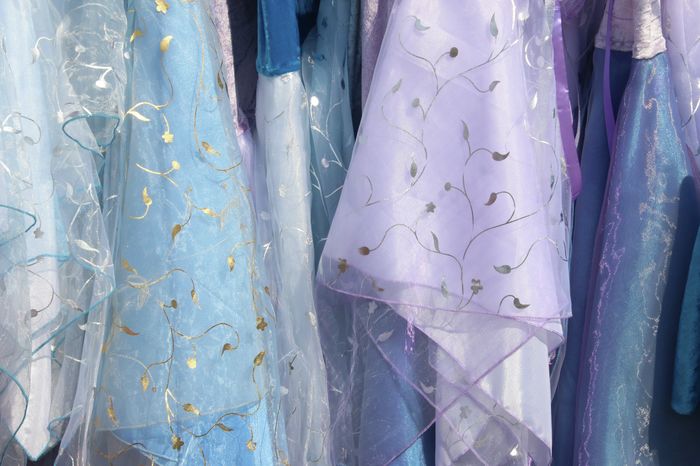Swishing my way to sustainability
Are clothing exchanges the next step to ‘new’ clothes that don’t cost the planet?

It is the night before the Swish. I have mercilessly culled my wardrobe and found myself with two full bags of clothing. Many of these were clothes that I wore only for very specific outfits and others I kept that didn’t really match my own sense of style, but I was too stubborn to let go of them. Now? It’s time for me to let go of these garments and move forward. I walk into the Fisher Building foyer and am greeted by rows of empty clothing rails. Tables waiting to be filled. Dozens of volunteers, just like me, who are taking a stride towards sustainability.

Half an hour passes. The tables are filled with skirts, shoes and scarves. The rails are bursting with dresses and shirts and jackets. We volunteers all unite for a triumphant picture — teamwork does certainly make the dream work. Today marks the first ever St John’s Swish: a clothing exchange with us, the volunteers, as the intermediaries. People bring clean, well-looked after clothes that need a new home. We organise them and hang them up in the hope that each piece will find a second life in a brand new wardrobe.
“Often, what drives the fast fashion wave is a love for retail therapy — alleviating our stress with the excitement of buying something new”
Once the Swish began, I allowed myself to indulge the satisfaction of adding new pieces to my wardrobe. I reflected on how it was the same feeling, the ‘spark’ of satisfaction which stopped me from shopping sustainably in the past. Often, what drives the fast fashion wave is a love for retail therapy — alleviating our stress with the excitement of buying something new. If all clothes were priced at their true value and made sustainably, it would suddenly become much harder to impulse buy several garments off the internet after having a bad day. It would not only be more expensive — forcing people to consider whether they actually need these clothes or not — but the instant gratification element of fast fashion would be gone. Both factors negate the entire point of ‘impulse’ buying.

Unfortunately, we live in a world where impulse buying is extremely easy, extremely affordable and the inescapable fast fashion ads on every social media platform are conditioning us to crave that spark of excitement from buying new clothes. This spark has proven itself to be one of the biggest barriers in combating the hold fast fashion has on our generation. While the end goal should be to do away with the idea that we need new clothes to make us feel better, there will inevitably be a transitory period between “I buy new clothes all the time whenever I feel sad” and “I bought a pair of black loafers 4 months ago for work”. Taking part in events centred around sustainability like clothing swaps, repair cafe days and regular wardrobe ‘spring cleanings’ to get rid of unworn clothes can all help us to create a distinction between “want” and “necessity”.
The St John’s Swish was organised by Jane Heal (left) and Clara Manco (right) with the aid of the Cambridge Carbon Footprint (CCF), a registered charity that works to raise awareness of climate change issues and support people in moving to low-carbon living. I spoke with Jane following the event to get her thoughts on how we can break free of rampant consumerism and move towards a more sustainable future. She highlighted the importance of community-based events geared around sustainability, stating that it’s a way to “tread lighter on the planet and have a lot of fun”. Reflecting on the success of the Swish, she pointed out the range of people who had turned up to the event. “Staff, students, fellows. Men and women. All of us like clothes!”
Also present at the Swish was Amy Munro-Faure who works for Cambridge Zero. She aims to create a connection between the research done in climate change and education systems that will allow students to be informed and educated on the issues that we are being faced with. We spoke about how fast fashion has gripped students in particular. She remarked that “the market is set up to have this addiction to buying things repeatedly, and fashion trends contribute to this too”. Affordability does not justify the existence of fast fashion, given that fast fashion preys upon people at all income levels by influencing them to buy stuff they don’t actually need. They sell a fantasy to us. As students, it can be tempting to buy into this fantasy, but ultimately, we are shooting ourselves in the foot as well as the entire planet. Amy speaks of a paradigm — “reduce, reuse, recycle” — which is geared towards waste reduction. The most budget-friendly thing we can do is buy less and reuse more.
 Features / Should I stay or should I go? Cambridge students and alumni reflect on how their memories stay with them15 December 2025
Features / Should I stay or should I go? Cambridge students and alumni reflect on how their memories stay with them15 December 2025 News / Cambridge study finds students learn better with notes than AI13 December 2025
News / Cambridge study finds students learn better with notes than AI13 December 2025 Comment / The magic of an eight-week term15 December 2025
Comment / The magic of an eight-week term15 December 2025 News / Uni Scout and Guide Club affirms trans inclusion 12 December 2025
News / Uni Scout and Guide Club affirms trans inclusion 12 December 2025 News / News In Brief: Michaelmas marriages, monogamous mammals, and messaging manipulation15 December 2025
News / News In Brief: Michaelmas marriages, monogamous mammals, and messaging manipulation15 December 2025










